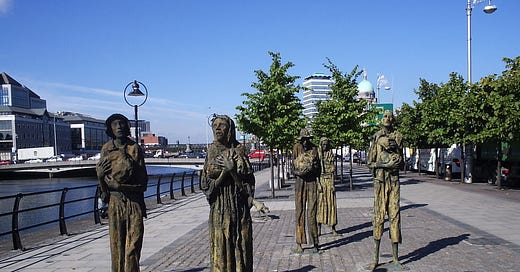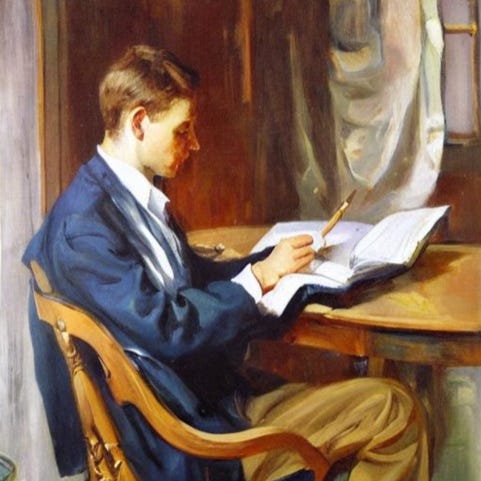
The statues pictured were designed and created by Dublin sculptor Rowan Gillespie. The Famine statues, which can be found at Custom House Quay in Dublin's Docklands, were gifted to the city of Dublin in 1997.
These statues commemorate the Great Famine of the mid-19th century. During the famine, around a million people died and a million more emigrated from Ireland, causing the island's population to fall by between 20% and 25%.
It was this image that made me think about despair and the impact it can have on people's lives.
The dry, emaciated skin, glued to the bones like wet clothes, the vacant, empty gaze, a symbol of someone who is there, but who is also absent, as if they had left on a journey from which they don’t want to return. These are the marks of hunger and human misery.
There are few works of art that have direct access to the heart, as if the author and the observer were old acquaintances, inseparable companions who understand each other even though they have never met.
The language of emotions is Universal, so readers will feel something similar to what I felt when looking at this photograph of a work of art in Dublin’s docks. The installation is called “Hungry”, and aims to eternalize the dock workers who used to carry goods there in exchange for a morsel of food.
I was particularly struck by the image of the fragile woman, clearly weak. I could feel her scream of pain and despair, which gives her the energy to carry the goods that will bring her that piece of food.
I believe that despair generates loneliness, since it condemns its victims to a prison whose bars are made of fear and helplessness. This is how the roots of isolation, emptiness and mistrust grow.
Seeing the photograph that accompanies this text reminded me of a poem I wrote about despair, an excerpt of which I now share with you:
“Despair is a pain that wakes up
the memories that remind you
that what was, is not in the past
but to the present,
and that’s why it hurts,
and hurts
when all around you
there is only the white of the walls
and an empty room,
no pictures
or smells
or the warmth of human skin,
just the white of the walls
that leaves you with no future,
and you know
that the end is always near
and soon there will be a white
that is not of peace
but of eternity”.
I think that despair is on the rise in today’s society. There is also hunger, the kind that means a lack of food. But there is another kind of hunger, an emotional hunger, a fear that hangs in the air like an invisible thread that unites us all. It is this kind of hunger that has led to an increase in tension and aggression, and consequently violence and destruction.
People feel scared and alone, helpless, with no hope for the future.
Only hope is capable of silencing the destructive instincts of human beings, so when the voices of hope are silenced, the voices of fear and despair speak, the same voices that have been responsible for the cycles of frustration, anger and hatred that humanity has faced throughout its history.
Rolando Andrade, 2025
If you want to read more of my work subscribe to






Keep hope alive.
It takes a few moments to find the history of a people and what they are made of, in order to truly understand each other, and that we really need to work toward a goodness that doesn't stop wars or end famines, hardships, loss of innocents, but does keep us and generations ahead of us working toward peace beyond all understanding. That's what I hope and pray for.